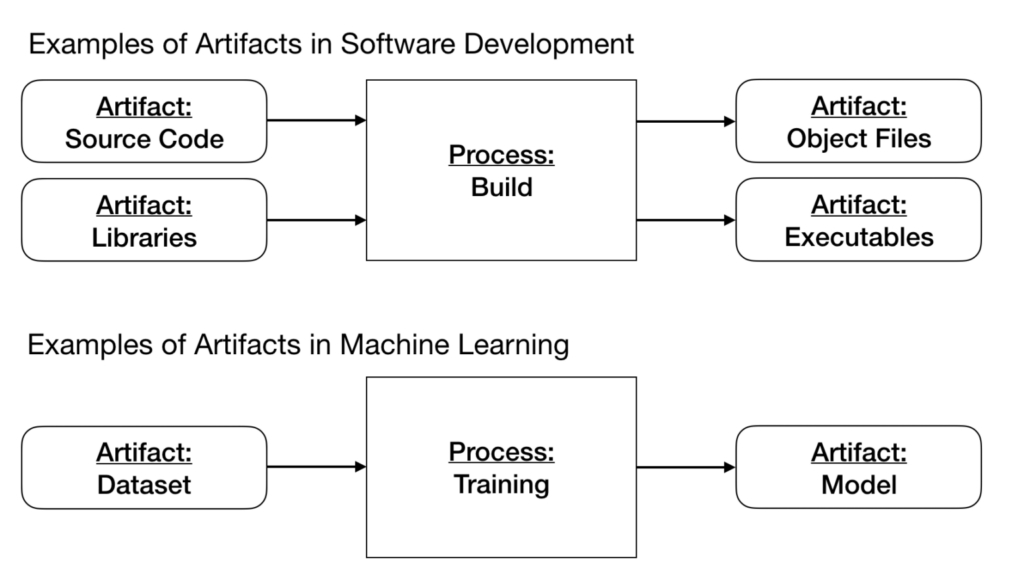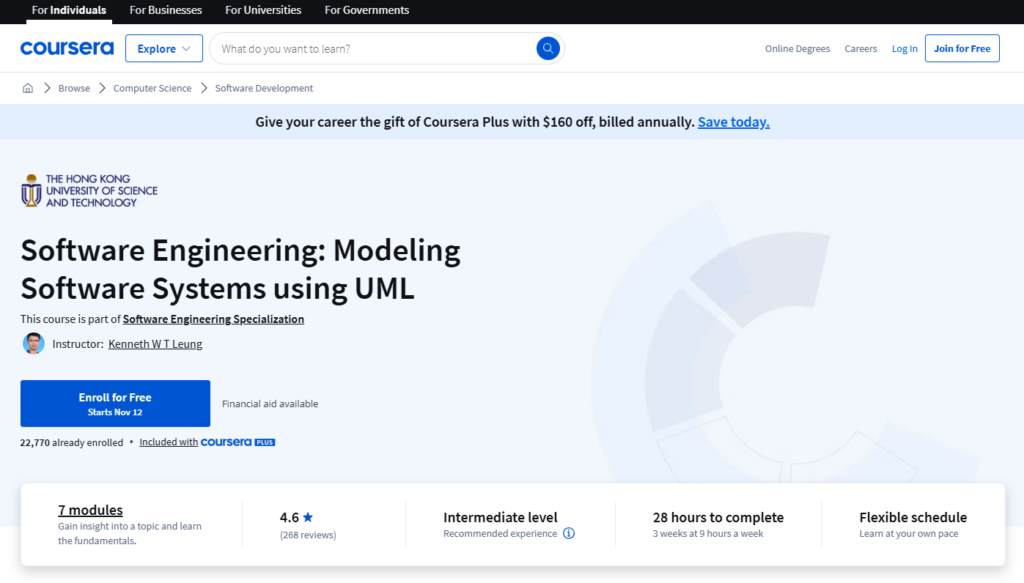All Categories
Featured
Table of Contents
- – Getting My Software Engineer Wants To Learn Ml...
- – Indicators on Machine Learning Engineer Learni...
- – 9 Easy Facts About How To Become A Machine Le...
- – Machine Learning In Production Things To Know...
- – The Greatest Guide To Is There A Future For ...
- – Fascination About How To Become A Machine Le...
- – The Single Strategy To Use For Software Engi...
Some individuals assume that that's disloyalty. If somebody else did it, I'm going to utilize what that individual did. I'm requiring myself to believe with the possible services.
Dig a little bit deeper in the math at the beginning, so I can develop that foundation. Santiago: Lastly, lesson number 7. This is a quote. It states "You have to understand every information of a formula if you desire to utilize it." And after that I state, "I assume this is bullshit advice." I do not believe that you have to understand the nuts and bolts of every algorithm prior to you utilize it.
I've been utilizing neural networks for the longest time. I do have a feeling of just how the gradient descent works. I can not describe it to you right currently. I would certainly have to go and inspect back to in fact get a better instinct. That does not mean that I can not solve points making use of neural networks? (29:05) Santiago: Attempting to require people to believe "Well, you're not mosting likely to achieve success unless you can discuss every solitary information of how this works." It goes back to our sorting example I think that's just bullshit suggestions.
As an engineer, I have actually worked with lots of, numerous systems and I have actually made use of lots of, lots of things that I do not comprehend the nuts and screws of how it functions, despite the fact that I recognize the impact that they have. That's the last lesson on that thread. Alexey: The funny point is when I think regarding all these libraries like Scikit-Learn the algorithms they use inside to apply, for instance, logistic regression or another thing, are not the like the algorithms we examine in maker understanding courses.
Getting My Software Engineer Wants To Learn Ml To Work
Even if we attempted to find out to obtain all these basics of maker learning, at the end, the formulas that these collections utilize are different. ? (30:22) Santiago: Yeah, definitely. I believe we need a lot a lot more materialism in the industry. Make a lot even more of an effect. Or focusing on providing worth and a little less of purism.

I normally speak to those that desire to function in the industry that want to have their impact there. I do not dare to talk regarding that because I do not recognize.
Right there outside, in the sector, pragmatism goes a lengthy way for certain. Santiago: There you go, yeah. Alexey: It is a good inspirational speech.
Indicators on Machine Learning Engineer Learning Path You Should Know
One of the points I desired to ask you. Initially, let's cover a pair of things. Alexey: Let's start with core tools and frameworks that you need to find out to actually shift.
I understand Java. I recognize SQL. I understand how to utilize Git. I know Bash. Maybe I understand Docker. All these things. And I become aware of equipment learning, it seems like an awesome point. What are the core devices and structures? Yes, I viewed this video and I get persuaded that I don't require to obtain deep right into mathematics.
What are the core devices and structures that I need to learn to do this? (33:10) Santiago: Yeah, absolutely. Fantastic concern. I think, number one, you need to start discovering a little of Python. Since you currently know Java, I don't believe it's going to be a huge shift for you.
Not due to the fact that Python is the same as Java, but in a week, you're gon na get a lot of the differences there. Santiago: After that you obtain specific core devices that are going to be used throughout your entire career.
9 Easy Facts About How To Become A Machine Learning Engineer In 2025 Explained
That's a library on Pandas for data control. And Matplotlib and Seaborn and Plotly. Those 3, or among those 3, for charting and displaying graphics. After that you get SciKit Learn for the collection of machine discovering algorithms. Those are devices that you're mosting likely to have to be using. I do not advise just going and finding out about them unexpectedly.
We can discuss specific programs later on. Take one of those courses that are going to start presenting you to some troubles and to some core concepts of artificial intelligence. Santiago: There is a training course in Kaggle which is an intro. I do not remember the name, however if you most likely to Kaggle, they have tutorials there totally free.
What's great about it is that the only need for you is to recognize Python. They're mosting likely to provide a trouble and tell you how to use choice trees to resolve that certain issue. I believe that procedure is very effective, since you go from no machine discovering background, to understanding what the problem is and why you can not address it with what you recognize right now, which is straight software design practices.
Machine Learning In Production Things To Know Before You Get This
On the various other hand, ML engineers focus on building and releasing artificial intelligence versions. They concentrate on training versions with data to make predictions or automate jobs. While there is overlap, AI designers manage more diverse AI applications, while ML designers have a narrower focus on equipment understanding formulas and their practical application.

Maker knowing designers concentrate on creating and releasing equipment understanding designs right into production systems. On the various other hand, information researchers have a broader duty that consists of data collection, cleansing, exploration, and structure designs.
As organizations increasingly take on AI and maker discovering technologies, the demand for knowledgeable professionals expands. Equipment knowing designers service sophisticated jobs, add to innovation, and have competitive wages. Success in this field requires continual understanding and maintaining up with evolving technologies and strategies. Artificial intelligence roles are typically well-paid, with the capacity for high gaining possibility.
ML is fundamentally different from typical software program advancement as it concentrates on training computers to gain from information, instead of programming specific guidelines that are implemented systematically. Unpredictability of results: You are most likely made use of to creating code with predictable outcomes, whether your feature runs once or a thousand times. In ML, however, the results are less certain.

Pre-training and fine-tuning: Just how these designs are educated on large datasets and after that fine-tuned for details tasks. Applications of LLMs: Such as message generation, view evaluation and details search and retrieval.
The Greatest Guide To Is There A Future For Software Engineers? The Impact Of Ai ...
The capability to take care of codebases, merge adjustments, and resolve conflicts is just as vital in ML development as it remains in standard software program projects. The skills created in debugging and testing software application applications are extremely transferable. While the context might alter from debugging application reasoning to recognizing issues in data handling or design training the underlying principles of systematic examination, theory screening, and repetitive improvement are the same.
Machine discovering, at its core, is greatly reliant on statistics and possibility concept. These are essential for recognizing exactly how formulas find out from information, make forecasts, and evaluate their efficiency. You must think about coming to be comfortable with ideas like analytical value, circulations, hypothesis screening, and Bayesian thinking in order to design and translate designs successfully.
For those thinking about LLMs, an extensive understanding of deep understanding architectures is beneficial. This consists of not only the auto mechanics of semantic networks but additionally the style of details designs for different use cases, like CNNs (Convolutional Neural Networks) for picture handling and RNNs (Persistent Neural Networks) and transformers for consecutive data and natural language handling.
You must know these concerns and find out strategies for recognizing, reducing, and communicating concerning prejudice in ML models. This includes the possible impact of automated choices and the ethical implications. Many models, particularly LLMs, call for significant computational resources that are usually provided by cloud systems like AWS, Google Cloud, and Azure.
Structure these abilities will not only facilitate an effective shift into ML but additionally guarantee that programmers can add successfully and responsibly to the development of this dynamic field. Concept is crucial, but nothing defeats hands-on experience. Begin servicing tasks that permit you to use what you have actually found out in a useful context.
Develop your projects: Beginning with easy applications, such as a chatbot or a message summarization tool, and gradually raise complexity. The area of ML and LLMs is swiftly progressing, with brand-new advancements and innovations arising regularly.
Fascination About How To Become A Machine Learning Engineer
Contribute to open-source tasks or write blog site messages concerning your knowing journey and tasks. As you get expertise, start looking for opportunities to integrate ML and LLMs right into your job, or seek new roles concentrated on these technologies.

Vectors, matrices, and their function in ML algorithms. Terms like design, dataset, attributes, labels, training, inference, and recognition. Information collection, preprocessing methods, design training, analysis procedures, and release factors to consider.
Choice Trees and Random Forests: Intuitive and interpretable models. Support Vector Machines: Optimum margin category. Matching problem kinds with appropriate models. Balancing efficiency and intricacy. Fundamental structure of semantic networks: nerve cells, layers, activation functions. Split computation and forward propagation. Feedforward Networks, Convolutional Neural Networks (CNNs), Reoccurring Neural Networks (RNNs). Image recognition, series prediction, and time-series analysis.
Information circulation, makeover, and function engineering techniques. Scalability principles and performance optimization. API-driven strategies and microservices combination. Latency monitoring, scalability, and variation control. Continual Integration/Continuous Release (CI/CD) for ML operations. Version surveillance, versioning, and performance monitoring. Detecting and dealing with adjustments in model performance over time. Dealing with performance bottlenecks and resource administration.
The Single Strategy To Use For Software Engineering In The Age Of Ai

You'll be introduced to three of the most pertinent parts of the AI/ML discipline; overseen knowing, neural networks, and deep knowing. You'll understand the distinctions between standard shows and machine learning by hands-on development in monitored understanding prior to developing out intricate dispersed applications with neural networks.
This course functions as an overview to maker lear ... Show Much more.
Table of Contents
- – Getting My Software Engineer Wants To Learn Ml...
- – Indicators on Machine Learning Engineer Learni...
- – 9 Easy Facts About How To Become A Machine Le...
- – Machine Learning In Production Things To Know...
- – The Greatest Guide To Is There A Future For ...
- – Fascination About How To Become A Machine Le...
- – The Single Strategy To Use For Software Engi...
Latest Posts
How To Prepare For Amazon’s Software Engineer Interview
Google Software Engineer Interview Process – What To Expect In 2025
Jane Street Software Engineering Mock Interview – A Detailed Walkthrough
More
Latest Posts
How To Prepare For Amazon’s Software Engineer Interview
Google Software Engineer Interview Process – What To Expect In 2025
Jane Street Software Engineering Mock Interview – A Detailed Walkthrough